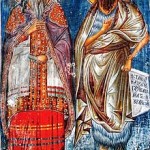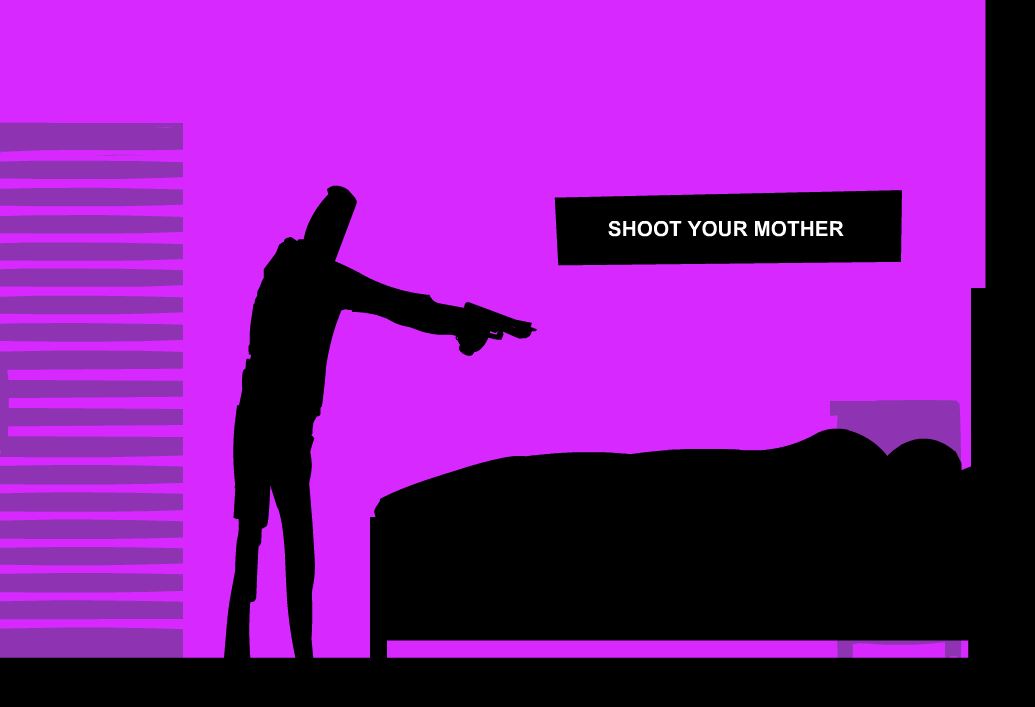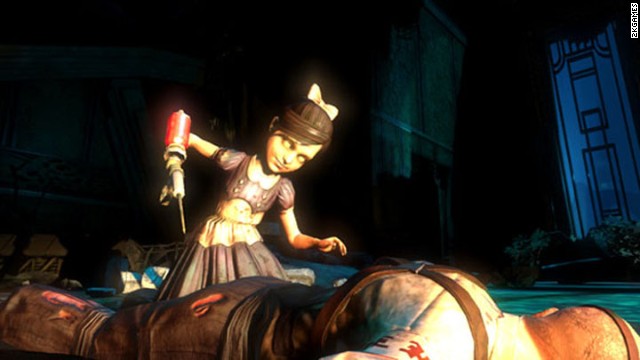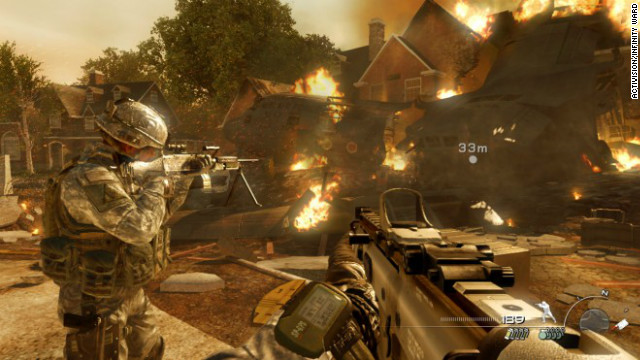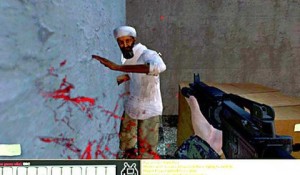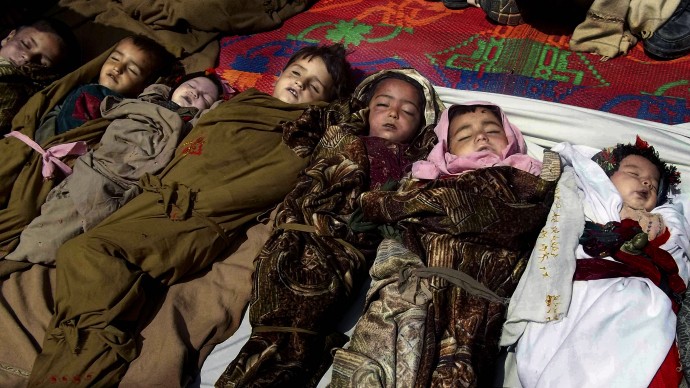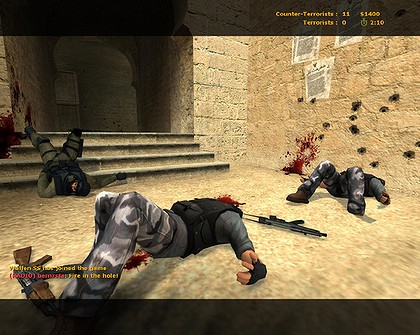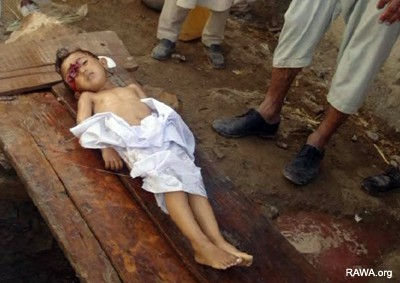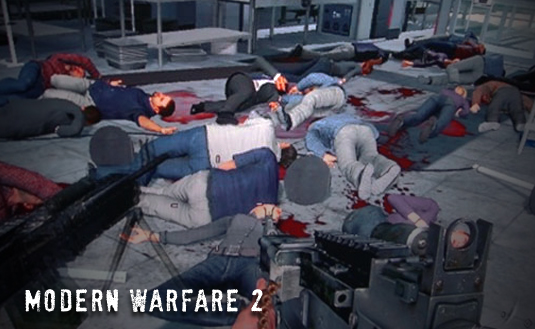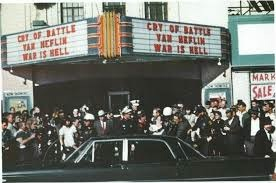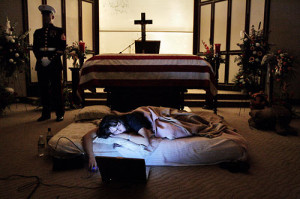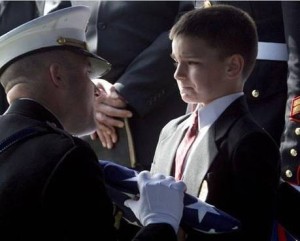The following reflection was written by Rev. Emmanuel Charles McCarthy and republished here with his permission.
****
During the Fall of 1963 I went to Mass at Saint Anthony’s Church in Long Beach, California. On Sunday, November 10, 1963, I heard a sermon that has lived with me for fifty years.
The homily that Sunday was delivered, not by the priest saying the Mass, but rather by the Monsignor (Dolan, I think, was his name) who was the Pastor of the parish. He seemed to me to be about sixty-five years old and carried himself in public with the stereotypical monsignor demeanor of that time, authoritative and to the point.
I remember only a few details of his homily. What I do remember clearly though, as if I were back fifty years in my pew at Saint Anthony’s, is the theme of his sermon and the unrelenting Dies Irae severity of his tone of voice. Severity of tone I had heard from the pulpit before, but his theme I had never heard spoken from a Church pulpit in my then twenty-three years of Catholic life. He said that a country, meaning the United States, that “lives by the sword of assassination will perish by the sword of assassination,” “God is not mocked,” “impenitent wickedness brings judgment,” “enough is enough.”
He never mentioned the United States explicitly, nor South Vietnam, but everyone in the Church knew the countries about which he was speaking, although three-quarters of the congregation more than likely could not point to Vietnam on a map. The previous weekend, on November 2, 1963, the President of South Vietnam, Ngo Dinh Diem, was assassinated in a bloody coup d’état. After a few days of the usual government and media cover-up, information began to leak out that the U.S. was a player in Diem’s murder. I never spoke a word to the Monsignor before or after his homily, so I do not know what he knew nor whether he was speaking exclusively about the murderous involvement of the U.S. with Vietnam or also with other countries in the past. But there was no question that he was condemning in the harshest religious terms available the U.S. government for murder.
The Monsignor concluded his sermon by saying something very close to the words those who are pursuing this path are enemies of the Cross. They are not on the road to glory but rather are on the road to shame and to ruin. His very last sentence, which I had heard hundreds of times before, but this time because it was spoken with such gravity and solemnity from a pulpit, I remember and “hear” to this day, “He who lives by the sword dies by the sword.”
I left Mass at Saint Anthony’s Church that Sunday morning disconcerted. This Monsignor had just put a chink in the armour that protected my deeply nurtured—cognitively and emotionally—taken-for-granted understanding of reality, my worldview. Specifically, he cast doubt on the belief that God and my country were working as one, using the same means to the same end. The Monsignor had more than insinuated that they were not, indeed, that they were working off of a different page from an altogether different book. My state of mind went back and forth from perturbed, to dismissive, to “that’s politics not religion,” to “He wouldn’t dare say something like that from the pulpit at Mass if it were not true!” The agitation over what he said and the certainty with which he said it rankled me all that Sunday, because if what he said were true then he knew something of importance about reality, God and the United States to which I was blind. However, over the next few days the intensity of my concern gradually diminished to a mere puzzlement.
When John F. Kennedy was assassinated on November 22, 1963, I was at the opera. I had taken my high school classes to a matinee performance of the Barber of Seville in Los Angeles. When a man in a contemporary business suit walked onto the stage, stopped the opera and announced that the President had been assassinated, my mind abruptly shot back to the final words of the Monsignor’s homily two Sundays earlier. My almost equally immediate experience was that my understanding of reality, my worldview, had hidden within it a momentous, dreadful and destructive ignorance, and hence, falsehood. There was truth about reality, God and the U.S. that was available and that was being kept out of my sight.
Getting out of Vietnam — On October 11, 1963, John F. Kennedy signed National Security Action Memorandum 263. This ordered a withdrawal of 1,000 troops, out of roughly 15,500 Americans stationed in Vietnam as advisors, by the end of 1963, and the complete withdrawal of troops by the end of 1965. As of this date approximately 100 Americans had been killed in Vietnam.
Getting back into Vietnam — National Security Action Memorandum 273 effectively overturned Kennedy’s NSAM 263 and ordered the planning of increased activity in Vietnam. The memorandum also authorized open-ended covert operations against North Vietnam. This, in turn, laid the groundwork for the making plausible the phony Gulf of Tonkin incident, which President Johnson used to obtain congressional authorization for a drastic escalation of the war to what would eventually amount to 500,000 troops in Vietnam. President Johnson signed National Security Action Memorandum 273 on Nov. 26, 1963, the day after the funerals of John F. Kennedy and Lee Harvey Oswald, and twenty-four days after the assassination of President Diem.
After Ngo Dinh Diem’s and John F. Kennedy’s assassinations more than 56,000 Americans were killed in Vietnam, hundred of thousands of Americans and their loved ones were maimed in body, mind and soul. An infernal program of daily torture and murder from sea, air and land was unleashed on Vietnamese men, women and children by the United States. Vietnam became known as the “land of the burning children.” Millions of Vietnamese were killed and maimed. Hell on earth was created by NSAM 273 for millions of sons and daughters of the Father of all in Vietnam and in the U.S.
On Sunday, November 10, 1963, I was unable to articulate exactly the content of the arrow of truth that had put a chink in the cultural armour that had been hardwired into me by the two generations before me in order to protect my nurtured understanding of reality, God and the U.S. In my bones I simply had an intuition that something basic in my understanding and experience of these three ideas and their relationship to each other might be so far off the mark that the wickedness was being chosen and cheered by me as good, indeed, as honorable and holy. Today, I would articulate the spiritual dis-ease I was experiencing as I left Saint Anthony’s Church as a feeling of trepidation that maybe I was being “had” on matters of eternal significance by a spiritual and moral climate created by others who were putting lipstick on a pig and pouring perfume into a cesspool. It was a presentiment that I could be living my life by nothing more than a cultural hagiographic vapor produced by toiletries designed to cosmeticize evil. And, I didn’t like that or want that, and I didn’t like being kept in the dark on such primal spiritual and moral and human matters.
So I would like to publicly thank Monsignor Dolan for having the Christian courage and commitment to truth to call—from the pulpit—political assassination by his own country by its correct name, murder, and for leaving no doubt that murder carries with it unthinkable and horrific consequences (judgment) for the person or society that chooses it. Finally, I would like to thank him for the good part he played in my life; namely, presenting an opening to see what otherwise was well-concealed truth.
The mystery of evil, as the Fathers of the early Church note, is only an iota shot of the mystery of God. There are more layers and dimensions to good and to evil than any human being can comprehend. Hence, neither the sources nor the consequences of a good act or an evil act can be fathomed and traced with a line connecting the dots from A to Z. The ripples that each sends forth into existence will reach times and places and people beyond human comprehension at the moment of choice. The task of the Christian is to focus on doing the good deed in the moment i.e., to abandoning himself or herself to the choice to love as Jesus loves. And, doing this in full confidence that the Christlike deed will ultimately produce good results in its own good time, good place and good way. Jesus does not come to teach people a philosophy, psychology, sociology or history of evil, but rather comes to teach humanity how to overcome evil, i.e., by loving others as He loves us. But, He does warn humanity to be on guard against choosing the evil deed, e.g., violence, enmity, mercilessness, etc. for it also sends out ripples across existence, but these ripples will bring unanticipated destruction to times and to places and to people beyond immediate comprehension.
There is infinitely more to November 22, 1963, than can be seen by the one-dimensional eye of politics. Indeed, there is infinitely more to any day than what is happening on the empirical side of existence. As Rabbi Abraham Joshua Heschel makes clear in his spiritual writings, “Most of what is most important in existence takes place on the invisible side.”
.-Emmanuel Charles McCarthy
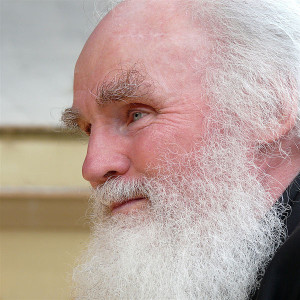
Rev Emmanuel Charles McCarthy at Our Lady’s Shrine, Knock, Ireland.
